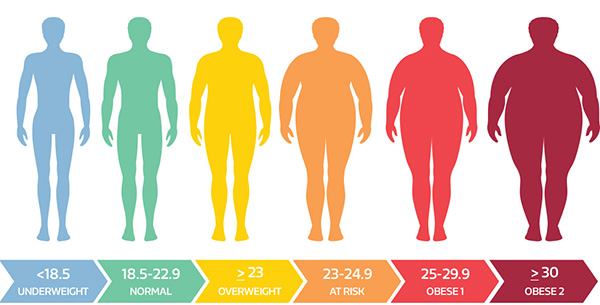Malnutrition in all forms is a major contributor to disease and early deaths for women and children. Over nutrition leading to overweight and obesity is increasing rapidly among low and middle-income countries, increasing the prevalence of chronic noncommunicable diseases and associated healthcare costs.
In the developed world, more than 40% of the population are overweight and over 20% are obese. In Rwanda the following are the current prevalence according to Scaling Up Nutrition Rwanda, (Adolescent Overweight Male: 4.9%), (Adolescent Overweight Female: 16.7%), (Adult Overweight Male: 14.2%), (Adult Overweight Female: 24.9%), (Adult Obesity Male: 2%), (Adult Obesity Female: 9.7%).
At least 35 million overweight children are living in developing countries and 8 million in developed countries. Children are increasingly exposed to high-fat, high sugar, high salt, energy dense, micro nutrient poor foods which tend to be cheaper than healthy foods.
Over nutrition is a chronic (long-term) condition when individuals take in more food or energy than their bodies use, which causes them to build up fat stores. This leads to being overweight or, in more extreme conditions, obesity.
Nowadays obesity is classified according to the BMI although obesity is defined as a BMI>30, the health risks of increased body weight rise progressively when BMI exceeds 25.
THE PHYSIOLOGY OF WHERE THE FAT STORED (ADIPOSE TISSUE)
The adipose tissue of a lean individual eating healthy food and exercising regularly comprises small adipocytes secreting a whole spectrum of hormones, e.g. adiponectin, predominantly protecting against insulin resistance.
In contrast, the adipose tissue of an obese individual with a poor diet and lack of exercise contains large adipocytes that secrete hormones and cytokines causing insulin resistance. It also contributes to hypertension and impairs the secretion of insulin from beta cells.
THE FACTORS CONTRIBUTING TO OVER NUTRITION
Today, more people live in cities, and their lives don’t require much physical activity. young people may have fewer safe outdoor spaces for sports and recreation, and many spend time doing things that aren’t active like watching TV and being on social media.
Sugary drinks and processed foods (with more calories) are more eaten and accessible today than ever before.
In addition there are genetic disposition, sedentary lifestyle and impaired mechanisms that protect an individual against excessive storage of fat.
RISKS OF OVER NUTRITION
These include threats to Health and to Socio economic well being.
A) HEALTH
- Diabetes.
- Cardiovascular disease.
- Accidents.
- Depression.
- Thromboembolic diseases.
B) SOCIO ECONOMIC
- Low educational attainment.
- Lower income.
- Lower social status
- More insurance claims.
- Earlier retirement.
THE NEGATIVE IMPACT OF OVER NUTRITION
However, the problems of over nutrition are increasing even in countries where hunger is endemic. Until recently, over nutrition, obesity, and the associated increased risk of noncommunicable diseases such as ischaemic heart disease, diabetes, stroke, and hypertension.
For pregnant women, overweight and obesity increase the risk of Gestational Diabetes (GDM) (a form of diabetes with onset during pregnancy), pre-eclampsia, pregnancy-induced hypertension, and large babies, which in turn raises the chance for induced labour, caesarean sections, stillbirths and preterm births as well as development of type II diabetes for the mother.
Children of obese mothers are more likely to be obese themselves, and to have diabetes and other diseases as they get older.
Obese youths have higher risks of broken bones, breathing problems, high blood pressure, early signs of heart disease, diabetes, and stress
The global cost of obesity and being overweight has been estimated to be US $500 billion per year.
TREATMENT OF OVER NUTRITION
Five different methods are used for the treatment of over nutrition:
- Diet.
- Psychotherapy.
- Modification of physical activity.
- Pharmacotherapy.
- Surgery.
The first three methods (Diet, Psychotherapy and Modification of physical activity) are the cornerstones of any over nutrition program because treatment is based on achieving negative energy balance. And for further information please get DietUp mobile application on Google play store it will help you to maintain your desire weight.
REFERENCES
- Brogan, C. 2017. ‘Tenfold increase in childhood and adolescent obesity in four decades.’ Imperial College London
- Stephan Svacina (2008), Basic concepts in nutrition: Overnutrition – Functional and clinical consequences, Charles University, Prague, Czech Republic
- World Health Organization. 2018. Obesity and Overweight Fact Sheet. https://www.who.int/en/news-room/fact-sheets/detail/obesity-and-overweight
- World Health Organization (2002), A global response to a global problem: the epidemic of overnutrition,
- Youth leaders for nutrition et tal (2020), YOUTH LEADERS FOR NUTRITION-ADOLESCENT NUTRITION BRIEFS
